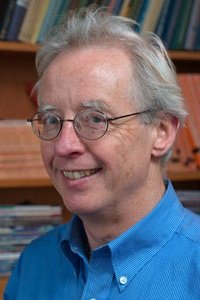Minnesota physicists complete detailed study of Higgs boson decays

Michael Coughlin, Assistant Professor in the School of Physics and Astronomy and a member of the Minnesota Institute for Astrophysics, is part of an international team of astronomers who have seen what might be the first light ever detected from a black hole merger.Jeremiah Mans, Roger Rusack and Nadja Stobbe and their groups are members of the Compact Muon Solenoid (CMS) Collaboration working on the CERN Large Hadron Collider that spans the Swiss-French border near Geneva, Switzerland. The announcement was made this week at the International Conference of High Energy Physics, which would have been in Prague, but was held virtually due to Covid-19.
At the Large Hadron Collider beams of ultra-high energy protons collide and about once in about forty million particle collisions a Higgs boson is produced. This massive particle only lives for about one-millionth of a billionth of a billionth of a second, before transforming into other lighter particles, less than one percent of the time it transforms into pure bursts of light – two photons.
The CMS Collaboration reported the most comprehensive measurements of Higgs boson properties to date, using events where the Higgs boson decays to two photons. Physicists used all the data collected by the CMS experiment between 2016 and 2018, allowing for unprecedented levels of precision. By using a series of templates to separate different decay modes, they were able to disentangle the different ways in which a Higgs boson is produced and how it decays.
The discovery of the Higgs boson by the ATLAS and CMS collaborations in 2012 marked the completion of the standard model of particle physics, which is our current best theory to describe elementary particles and their interactions. In the standard model, the Higgs mechanism explains how elementary particles attain their masses via electroweak symmetry breaking, and a consequence of this theory is the prediction of a fundamental scalar particle, the Higgs boson. When both of the ATLAS and CMS experiments reported a significant excess of events (i.e. processes occurring in the detector) consistent with the Higgs boson, it was heralded as one of the great triumphs of particle physics. However, despite this success, many unanswered questions remain. To name just a few: Why is the Higgs boson so unnaturally light? What is the origin of Dark Matter? Where does gravity fit into the picture? In the quest to explain such fundamental questions, we are yet to observe any significant deviations from standard model predictions.
After the discovery of the Higgs, there was hope that the collider would reveal a wealth of new particles to help answer these questions. When this didn’t happen, physicists shifted gears towards precision measurements; an alternative approach in the search for new physics. The general idea is that physics beyond-the-standard model can interact and interfere with standard model particles and subsequently leave an imprint on their properties and precision measurement of these properties will unlock new physics. For the Higgs boson, precision measurements of its couplings to other particles provide a unique tool to probe the electroweak symmetry breaking sector, an area which many believe to be the hiding place of new physics.
The two photon decay path is one of the few decay channels which is sensitive to all of the major Higgs boson production modes, making it an ideal tool to learn more about the details of the Higgs production mechanisms. The Minnesota group led a critical component of this study, where the production of Higgs bosons in association with vector boson was measured. These vector bosons are massive particles known as the W and Z, and were discovered in the 1980’s and are fundamental components of the electroweak model. Seeing them being produced alongside Higgs bosons provides a highly sensitive test for new physical phenomena. The new results were all consistent with the standard model. It is hoped that with data that will be available in the coming years these measurements can be repeated with even higher precision to look more deeply for evidence of new physics.